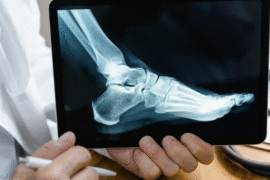This article may contain references to products or services from one or more of our advertisers or partners. We may receive compensation when you click on links to those products or services. Nonetheless, our opinions are our own.
The information presented in this article is accurate to the best of our knowledge at the time of publication. However, information is subject to change, and no guarantees are made about the continued accuracy or completeness of this content after its publication date.
- Major Highlights
- Introduction
- Inside Sales and Outside Sales Compared
- Roles and Responsibilities
- Comparing Work Environments
- Customer Communication Methods
- Lead Generation and Prospecting
- Compensation and Pay
- Skills for Sales Success
- Getting Started in Sales
- Final Thoughts
- Frequently Asked Questions
- Recommended Reads
Major Highlights
- Inside sales are conducted remotely using calls, emails, and video conferencing to convert leads and close deals.
- Outside sales involve face-to-face meetings, offering a more personalized sales experience.
- Work environments differ; inside sales are office-based, while outside sales operate in the field.
- Both roles require strong industry knowledge, time management, and customer interaction skills.
- CRM tools and digital platforms enhance performance in both sales types.
- Choosing the right sales model depends on product complexity, business goals, and customer expectations.
Introduction
Making sales is not just about finishing deals. To get the most out of sales, you need to understand your customers. It is also important to know the best way to reach them. There are two main ways to sell: inside sales and outside sales. These two strategies help sales teams build strong customer relationships and bring in more income. Inside sales uses remote tools like phone or email to talk with people. On the other hand, outside sales focus more on meeting customers in person. You should know what is good about each way of selling. This helps you create the best sales plan for your business and your field.
Inside Sales and Outside Sales Compared
Selling the right way takes a lot of flexibility. Businesses often use inside sales or outside sales to match what customers want and what the market needs. Inside sales means talking with customers without meeting face-to-face. Sales teams use the internet and other digital tools to find new customers, check if someone might buy, and close deals fast. On the other hand, outside sales focus on travel and meeting people in person. The goal is to connect with each client in a more personal way.

Both strategies have their own strong points. It is important to know how they are not the same. It also helps to see how they can work with each other. This is a good way to build a strong sales operation.
Inside Sales
Inside sales teams focus on talking to customers using phones and computers instead of meeting them in person. The team works from an office or sometimes from home. They use CRM software, phone calls, emails, and video calls to reach people. This helps them get the sales job done in a good way.
Customer relationship management is an important part of the sales process. It helps sales representatives keep track of leads and makes it easier to talk with customers. Cold calling and email marketing help with lead generation on a large scale. When sales professionals use digital tools well, they can handle more sales and do their work with extra care.
They also show how the product works using video calls. During these calls, they change the way they talk about the product to match what each customer needs. The team sends follow-up messages, uses email campaigns, and reaches out at the right time to build good relationships and help move leads forward in the sales process. The main goal is to finish deals a quick way. They also want to keep talking in a polite, clear way while building trust with people at a distance.
Outside Sales
Outside salespeople put their effort into meeting people in person. Sales teams talk and connect with customers face-to-face. This helps to build strong customer relationships. In this approach, teams rely on direct meetings and talks. This way, they can give each customer a personal experience.
Field sales reps often go out to meet clients. They build strong relationships and really get to know what customers want. This way of selling works well for products that are hard to explain or cost a lot. It is good for times when you need to show the product in person or talk about the deal right there with them.
Outside salespeople do more than go to meetings. They also go to networking events, trade shows, and business outings to make their client relationships stronger. A big part of their work is to talk face-to-face, make deals, and work out the details. These sales representatives use good communication and can change as needed in a situation. They are good at finding the right answers for people and helping everyone grow and do well for a long time.
Roles and Responsibilities
Sales representatives have an important role in both inside sales and outside sales. They change the way they work to fit what the customer needs. Inside sales workers use things like email and phone calls to talk with people from a distance. On the other hand, outside sales workers meet with people in person and give them a more personal experience.
No matter which approach you take, top sales reps know what customers like. They keep good partnerships and reach goals that help the business grow over time.
Typical Duties of Inside Sales Representatives
Inside sales representatives do remote sales tasks in a good way. The work they do most of the time includes:
- Cold calling: Making calls to new clients and starting a conversation with them.
- Email marketing: Making special email plans to talk to leads.
- Lead generation: Finding and checking new customers by using CRM software.
- Follow-ups: Getting in touch at the right time to keep people interested.
- Product demonstrations: Doing online demos that fit what the client wants.
Inside sales teams use CRM systems to keep their work in order. They are good at managing time. This lets them talk to many leads at once. They use things like video calls and social media to answer customer needs fast. This way works well for B2B industries that have a lot of deals to make.
Typical Duties of Outside Sales Representatives
Outside sales representatives do well in jobs where they spend time outside the office and meet people face-to-face. They build good relationships with customers by talking to them directly. Their main tasks include:
- Face meetings: These are talks you have in person to find out what the client wants.
- Networking: You go to events and trade shows to meet and talk to new clients.
- On-site presentations: You show your product or service to others where they are.
- Negotiations: This is when you set the rules and make deals by meeting in person.
- Relationship building: You get closer to your clients by talking with them one-on-one.
Field reps often deal with longer sales cycles. They use their expert knowledge to help do hard sales deals, and they can change their talks to fit the client when meeting in person. This helps give each client a solution that works just for them.
Comparing Work Environments
Inside and outside sales professionals have different work settings. Inside sales roles are done in the office. These workers use tools like CRM systems, email, and video calls to do their job. Outside sales professionals meet clients in person and often visit their sites. They focus on building strong and close relationships with the people they work with.
Choosing the right model will depend on your product, what the client wants, and your goals at work. Inside sales focuses on making more calls and reaching more people. Outside sales give more time and care to each person and make things feel more personal.
Office-Based and Field-Based Approaches
Office-based inside sales use digital tools and central systems. These help sales reps manage a lot of deals quickly. This is good for industries that work with small or mid-sized businesses.
Field-based approaches mean outside sales, where reps go to the customers’ places. They give one-on-one help and take care of tough deals. This way, it works well for those who deal with big contracts or offer things made to fit each person.
Many companies use hybrid models these days. Inside sales reps look for good leads. Outside reps work on tougher deals. This way, people use their time better and can handle changes in the market.
Voted "Best Overall Budgeting App" by Forbes and WSJ
Monarch Money helps you budget, track spending, set goals, and plan your financial future—all in one app.
Get 50% OFF your first year with code MONARCHVIP
Customer Communication Methods
Good communication is important in both kinds of sales. People use different ways to talk to others:
- Video conferencing (e.g., Zoom) is used for online meetings where you can see the other person’s face.
- Phone calls are good to add a more real feel to talking.
- Email marketing helps to build up leads over time.
- Social media is for talking with people and sharing news.
- Follow-ups help to keep up with people and stay connected.
Inside reps work on getting things done faster by using digital tools. Outside reps use both online tools and meet people face-to-face. Good communication helps build trust and helps people move through the sales funnel.
Tools and Technologies
Modern sales teams count on new tools to do their work well. The CRM systems, messaging apps, and data tools help salespeople keep track of leads, talk with customers, and finish sales.
CRM Software in Sales
CRM tools are important to help you keep track of sales and keep things organized. Here is how their features help both types of sales:
| Feature | Inside Sales Usage | Outside Sales Usage |
|---|---|---|
| Contact Management | Stores client data and engagement history | Access on the go while traveling |
| Activity Tracking | Logs calls, emails, and follow-ups | Records meetings and site visits |
| Reporting & Analytics | Measures digital campaign results | Tracks field interactions |
| Workflow Automation | Prioritizes high-potential leads | Sends task reminders |
| Mobile Accessibility | Enables work-from-anywhere setups | Important for field reps in transit |
Platforms like Salesforce help with both models. They make it easy to get the most out of customer engagement.
Lead Generation and Prospecting
Sales teams use tools to find prospects and turn them into buyers.
- Social selling: LinkedIn helps reps get in touch with top decision-makers.
- Customer profiling: Tools make deep target profiles.
- Automated email sequences: Let you send out personal messages to many people.
- Data analytics: Show how to find new leads and follow up.
- CRM systems: Keep all prospect info in one place so it is easy to find.
Inside reps work to reach many people. Outside reps use these tools to stay organized when they are out. Both get something good when they start using these tools together.
Compensation and Pay
Pay can be different for each job. People in inside sales jobs usually get a basic paycheck and a bonus when they do well. Outside reps often have a base pay. They also get extra money, called commission, when they close deals.
Salary Ranges in the U.S.
| Job Title | Average Salary | Bonus Potential |
|---|---|---|
| Inside Sales Representative | $50,000–$70,000 | Up to $15,000 based on KPIs |
| Outside Sales Representative | $60,000–$85,000 | Commission-based + Bonuses |
| Sales Manager | $80,000–$120,000 | Bonuses and possible stock options |
Inside jobs are about getting lots of work done and knowing what to expect. Outside jobs give rewards for big sales and for keeping clients with the company.
Commission and Bonus Structures
Sales roles commonly include:
- Performance-based rewards
- Levels of pay when you go past your goals
- Bonuses for meeting goals are set for every three months
- Special deals during the busiest times
- Bonuses for staying with us on accounts that last a long time
These structures give rewards for effort and results. This helps sales reps feel driven to meet and beat targets.
Skills for Sales Success
Good communication, customer help, and easy time management are important sales skills. A person needs to be flexible, comfortable with technology, and focused on their goals to do well in any sales job.
Skills for Inside Sales Professionals
- Clear digital communication
- How to choose what to do first and how to handle more than one task at once
- Knowing how to use CRM platforms
- How to help customers from afar
- Ways to read data and make outreach better
Skills for Outside Sales Professionals
- In-person negotiation and persuasion
- Building long-term client relationships
- Product presentation and demos
- Strategic planning for field activity
- Flexibility while traveling or on-site
Getting Started in Sales
When you start in sales, you can choose to work from home or go out to meet people in the field. Entry-level jobs help you learn the basics. You get to know CRM tools and how to manage clients.
What You Need to Begin
- Use CRM software like HubSpot or Salesforce.
- Have a good phone, laptop, and video tools ready to use.
- Learn the basics of sales strategy with simple training.
- Know how to research social media.
- Find some easy-to-read sales books and join webinars for learning.
Change your tools so they fit your job. It does not matter if you work online most of the time or if you travel a lot.
Starting Your Sales Career
- Research and choose your focus: Take some time to learn about the different product types out there. Find out what clients look for and what they expect from you.
- Build necessary skills: You need to get good at talking with people, handling your time well, and using tools like CRM.
- Apply for entry-level positions: Update your resume so it fits each job you want. Use LinkedIn and your network to help you in your job search.
Final Thoughts
Knowing the gap between inside and outside sales is important for anyone who wants to go into sales. Every job has its own set of tasks, tools, pay style, and ways to talk to customers. Some people like using computers or phones to talk to customers. Others feel better meeting people face-to-face. Both routes can help you grow at your job and make a big impact. Pick the way that lines up with your strengths and what you want in your work. You also need to be prepared to adapt as the business environment evolves.
Frequently Asked Questions
Is inside sales or outside sales better for beginners?
Both are great options. Inside sales offers strong training in digital tools, while outside sales builds in-person communication skills. Choose based on your strengths.
What industries are best suited for inside sales?
Tech, SaaS, and business services use inside sales due to scalability and fast communication.
How much travel is required in outside sales?
It varies, but many roles require frequent travel to client sites, events, or trade shows.
Can you move from inside sales to outside sales?
Yes. Many professionals start inside and transition to outside roles with experience.

Reviewed and edited by Albert Fang.
See a typo or want to suggest an edit/revision to the content? Use the contact us form to provide feedback.
At FangWallet, we value editorial integrity and open collaboration in curating quality content for readers to enjoy. Much appreciated for the assist.
Did you like our article and find it insightful? We encourage sharing the article link with family and friends to benefit as well - better yet, sharing on social media. Thank you for the support! 🍉
Article Title: Inside Sales vs. Outside Sales: How Are They Different?
https://fangwallet.com/2025/06/26/inside-sales-vs-outside-sales-how-are-they-different/The FangWallet Promise
FangWallet is an editorially independent resource - founded on breaking down challenging financial concepts for anyone to understand since 2014. While we adhere to editorial integrity, note that this post may contain references to products from our partners.
The FangWallet promise is always to have your best interest in mind and be transparent and honest about the financial picture.
Become an Insider

Subscribe to get a free daily budget planner printable to help get your money on track!
Make passive money the right way. No spam.
Editorial Disclaimer: The editorial content on this page is not provided by any of the companies mentioned. The opinions expressed here are the author's alone.
The content of this website is for informational purposes only and does not represent investment advice, or an offer or solicitation to buy or sell any security, investment, or product. Investors are encouraged to do their own due diligence, and, if necessary, consult professional advising before making any investment decisions. Investing involves a high degree of risk, and financial losses may occur including the potential loss of principal.
Source Citation References:
+ Inspo
There are no additional citations or references to note for this article at this time.












































